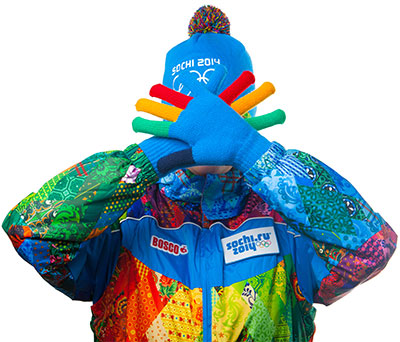On Friday night from the comfort and safety of Pluckers in Fairview, Texas, with my boneless, parmesan chicken wing in hand, I watched the opening ceremony of the 2014 Winter Olympics in Sochi. It was filled with music, dancing, colorful theatricals, lots of moving parts and yes, of course, as we all know, the snowflake that didn’t open. But hey, if that’s all that goes wrong, who are we to complain?
 Leading up to the Winter Olympics, media was focused on security, and this trend has continued on into the present, up-to-the-minute coverage of the games. From all accounts, security in Sochi seems to be tight and being taken very seriously, just not an “in-your-face” experience as Russian President Vladimir Putin wanted.
Leading up to the Winter Olympics, media was focused on security, and this trend has continued on into the present, up-to-the-minute coverage of the games. From all accounts, security in Sochi seems to be tight and being taken very seriously, just not an “in-your-face” experience as Russian President Vladimir Putin wanted.
The “ring of steel.” The visibility of guns is lacking, with the most-visible guns being those carried on the backs of biathlon racers while mounds of sticks and leaves on a hillside move, indicating a camouflaged army tent guarding the highway from Sochi to the mountains of man-made ski hills and sledding venues. Roads, railways and airport runways around Sochi are laced with police sentries, some of them standing just 100 feet apart as surveillance cameras record movements along these pathways. Military boats are visible off the coast.
Perhaps most peculiar is the fenced-in building that appears to be a part Olympic security, complete with an unmarked surveillance blimp decorated with a colorful mural of a giant green tree and a purple eggplant that lowers into this building’s parking lot at night. (One can only imagine the symbolism of the mural and what the blimp is being used for.)
Within the Olympic venue. Approximately 40,000 Russian security officials are present, checking bags, scanning water bottles and patrolling the area wearing purple pants and athletic jackets adorned with the Sochi 2014 logo and colorful, traditional Russian patterns. During the opening ceremony, fans had to submit to searches and metal detectors, a seemingly normal part of security in this day in age.
People with tickets to the games are required to submit their passport details along with a photo, and at security checkpoints within venues and Olympic Park, all photo badges must be scanned. Journalists entering Olympic Park must partake in an airport-like security check and encounter a device to test if the contents in their water bottles are harmless. “Clear zones” connect venues, allowing people who have already gone through security checks to easily move about.
Overall, Russian security officials are so sure of their security measures that prominent leaders are allowed to mingle close to fans probably also due, at least in part, to using communications interception tools, drones, sonars that identify hostile submarines and CCTV cameras.
Whatever it takes. The 2014 Winter Olympics must go on.
Alexander Mak / Shutterstock.com